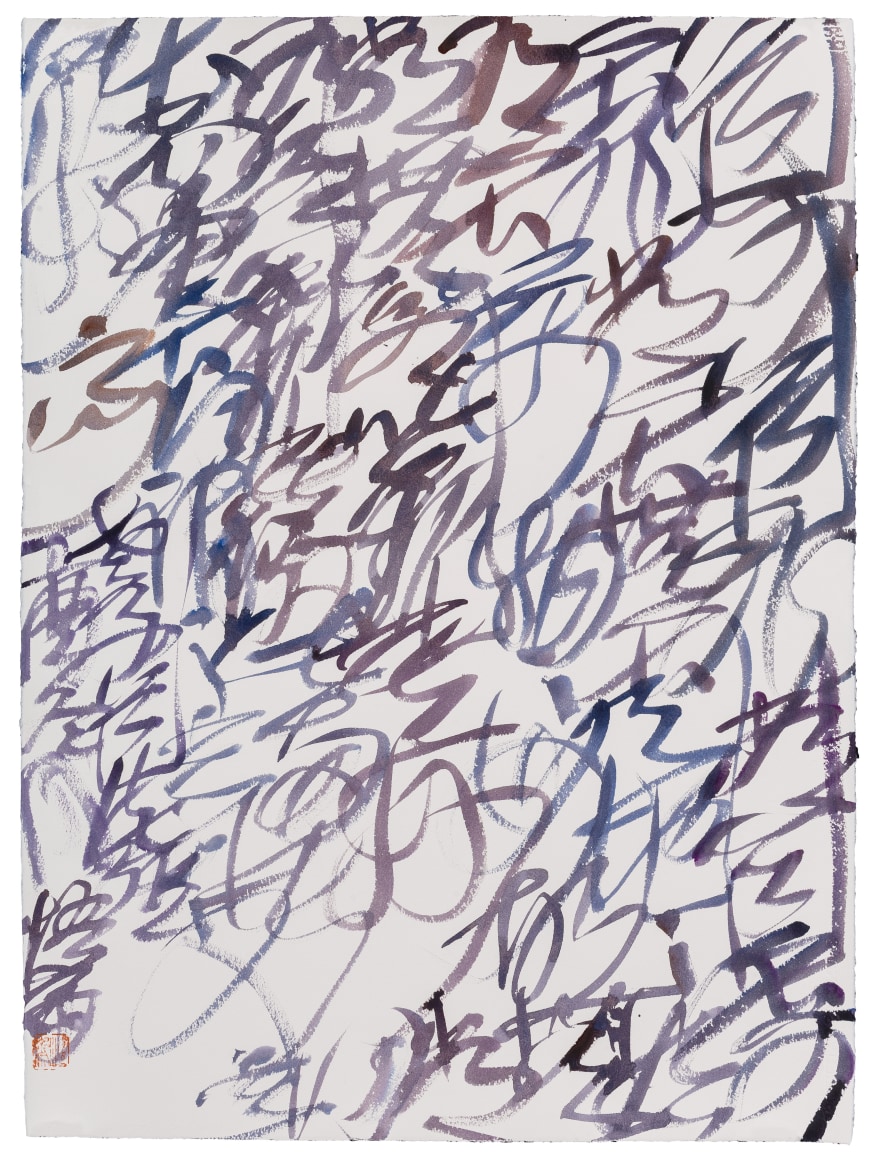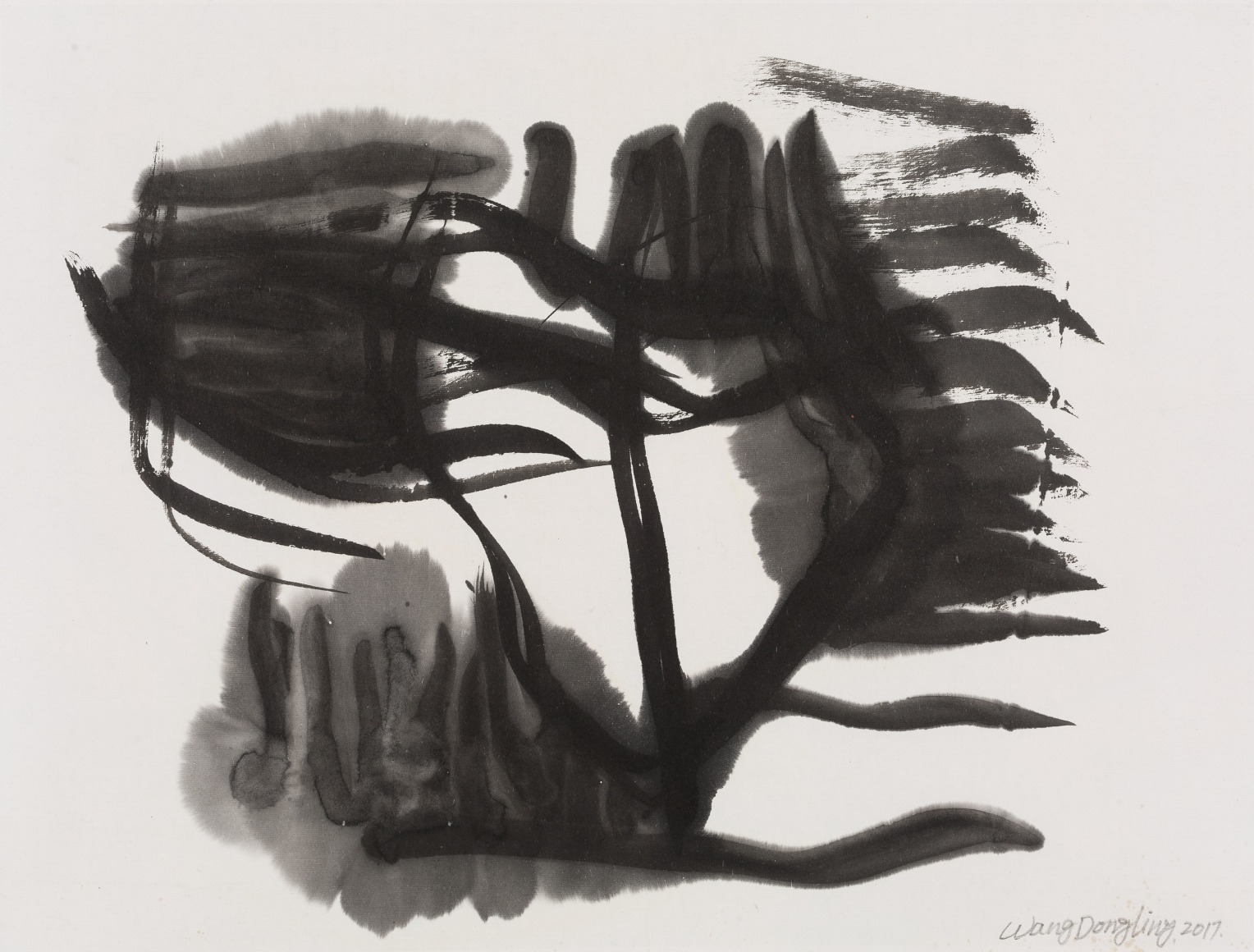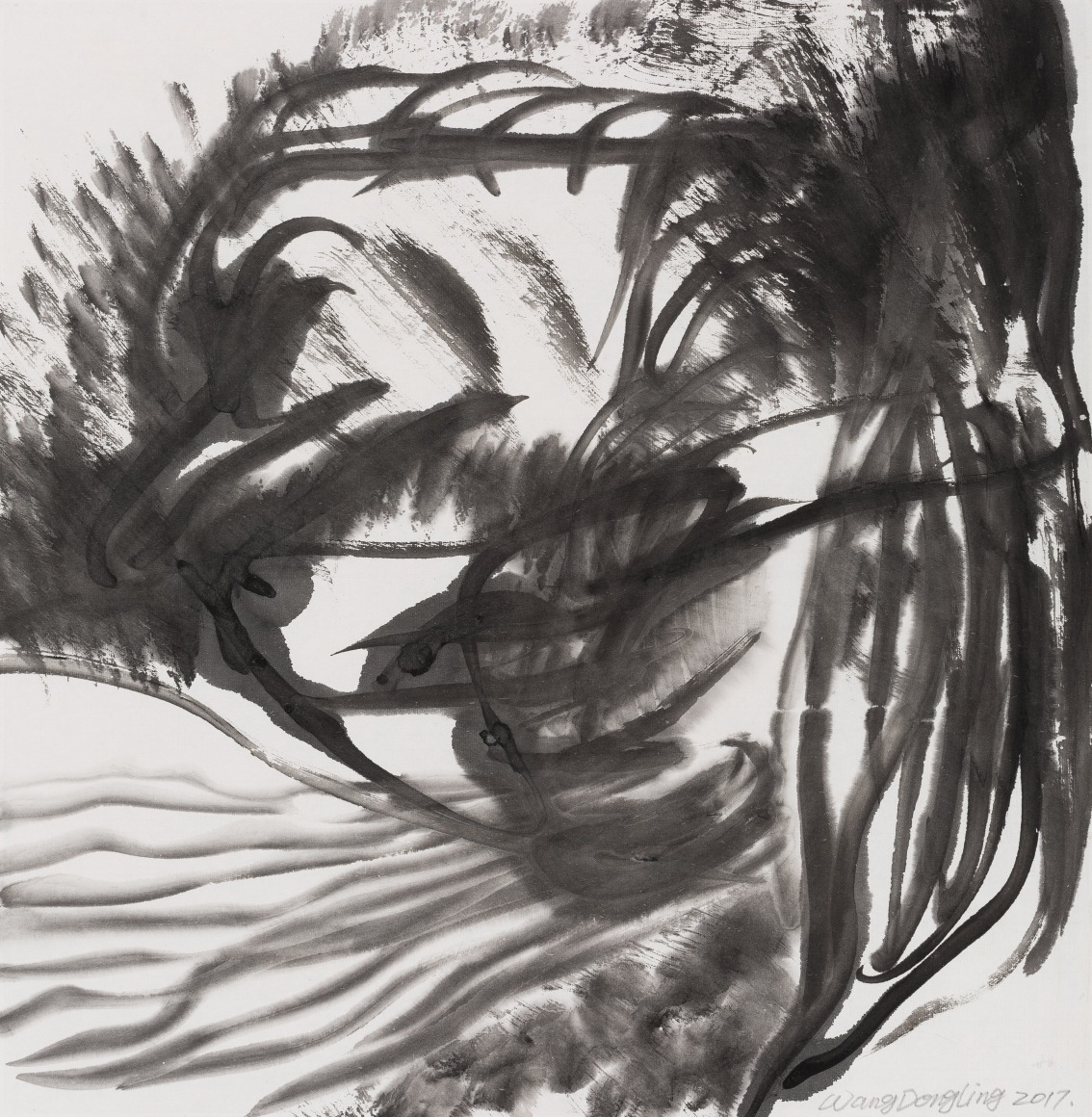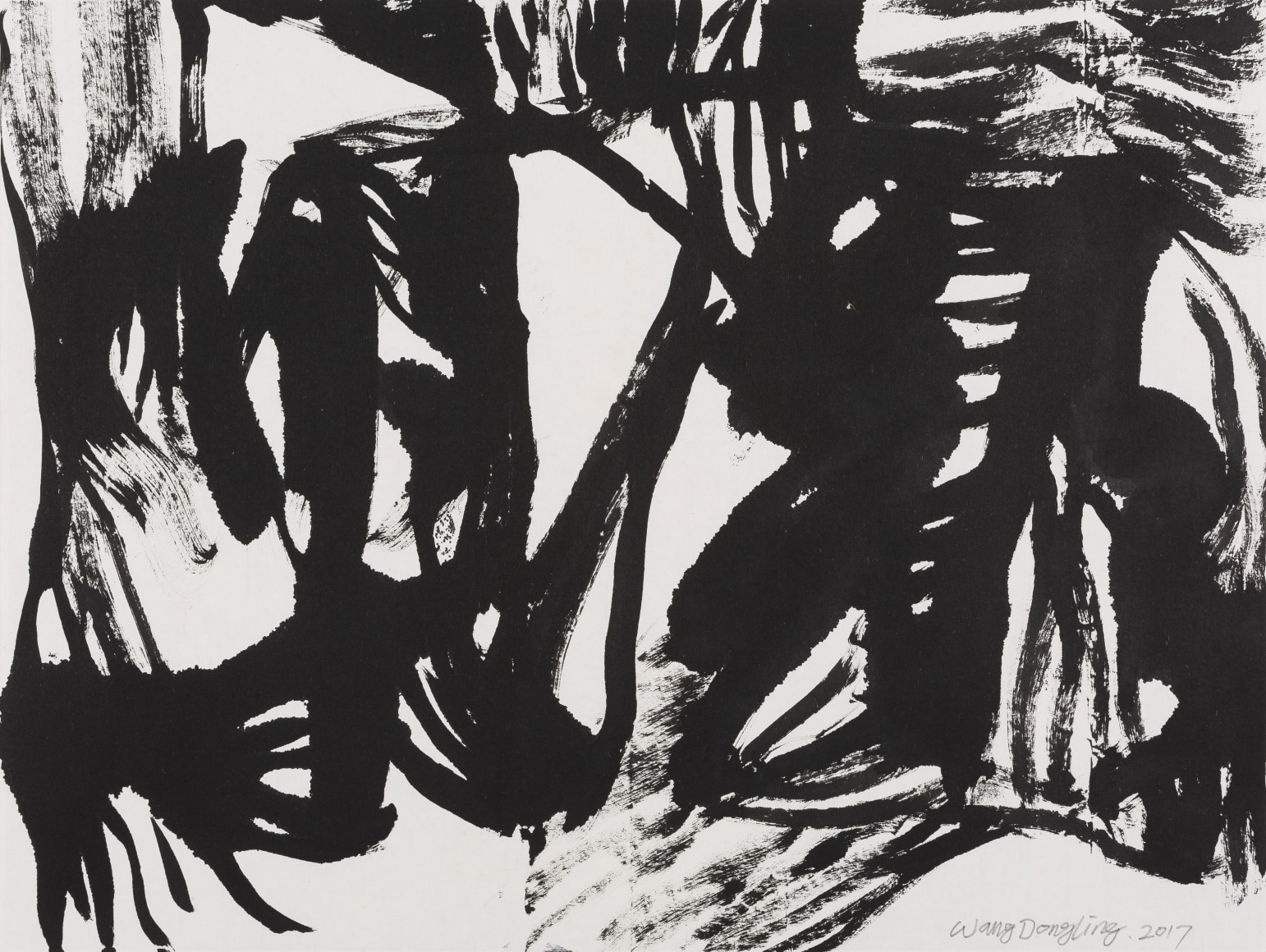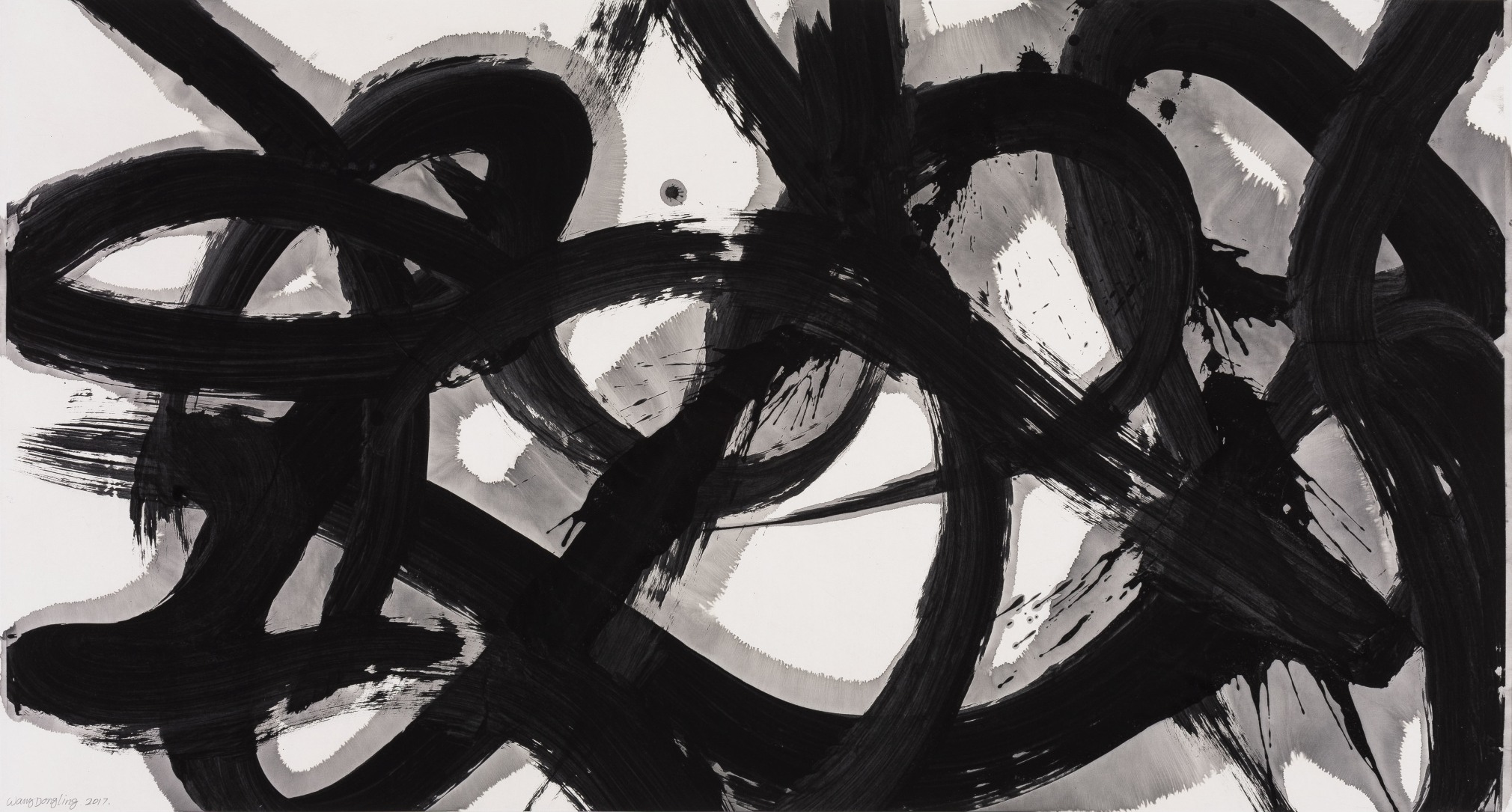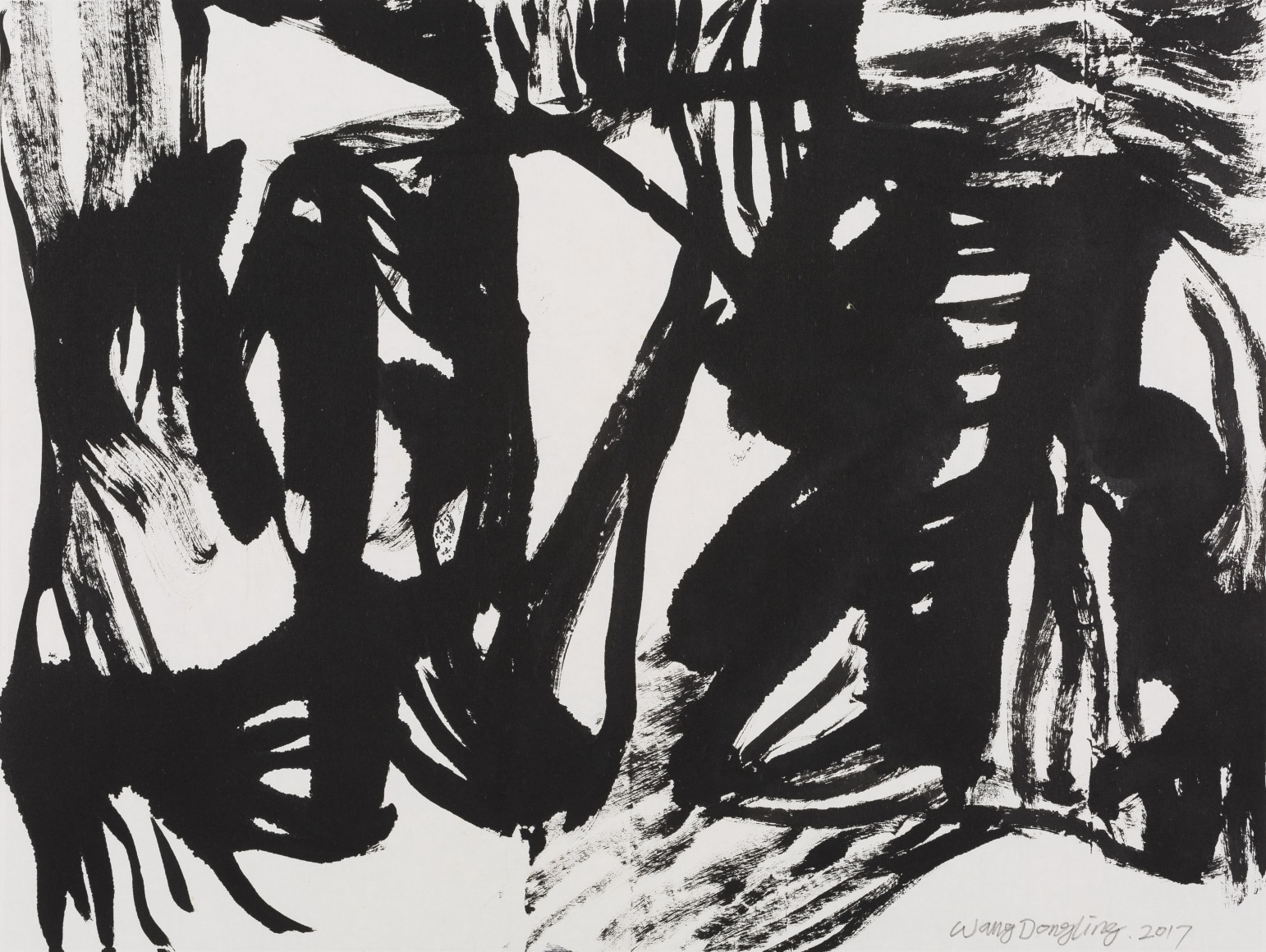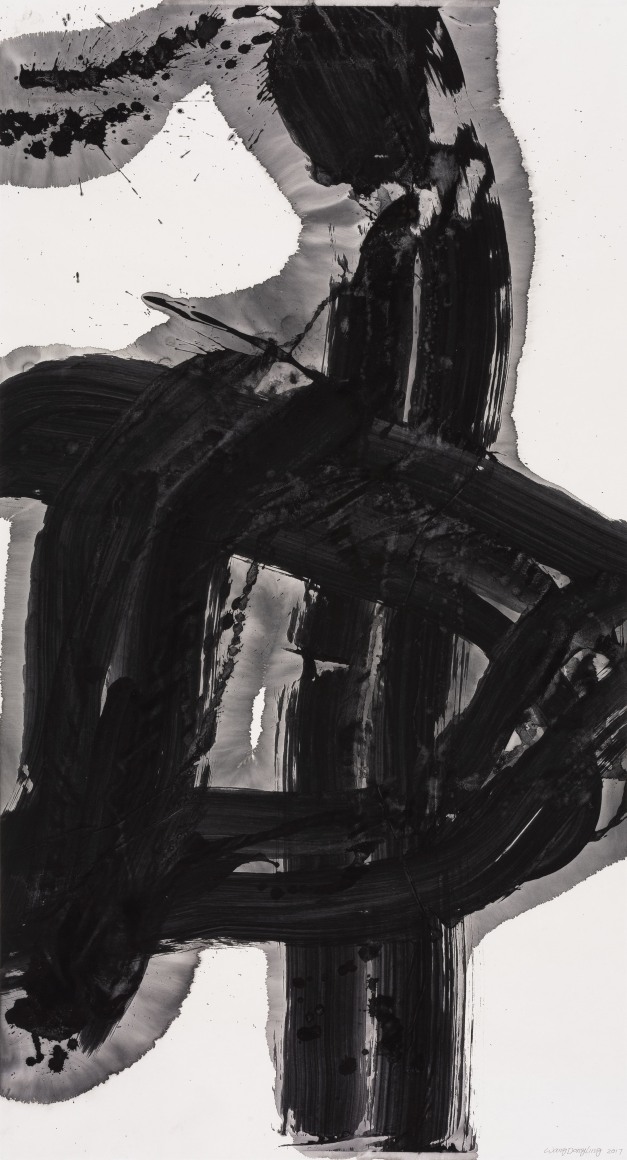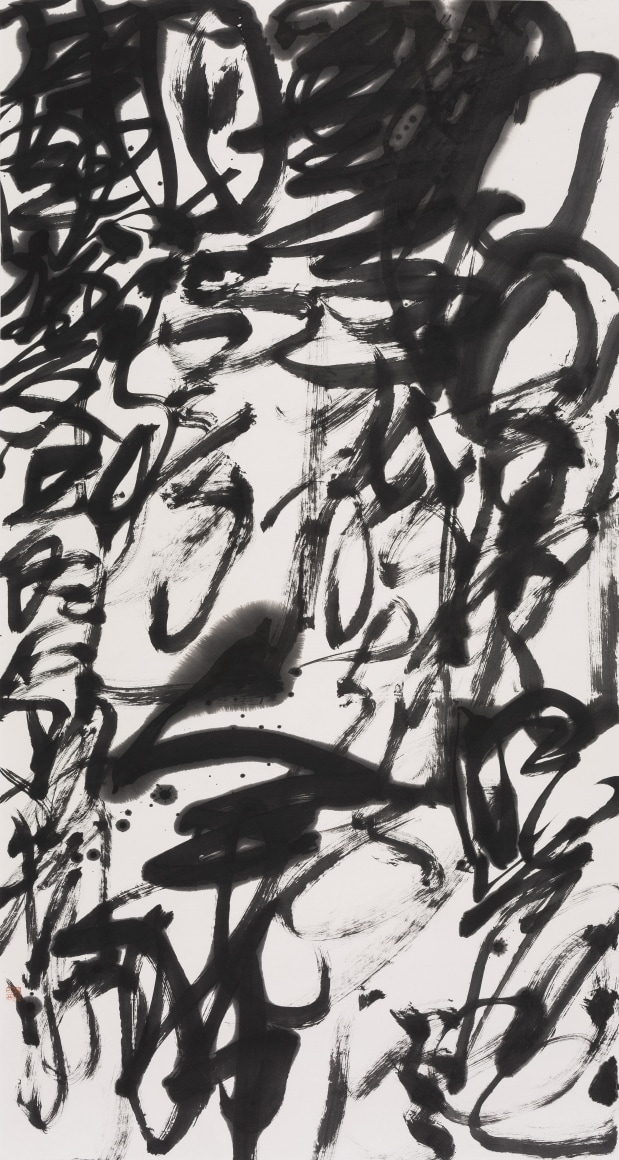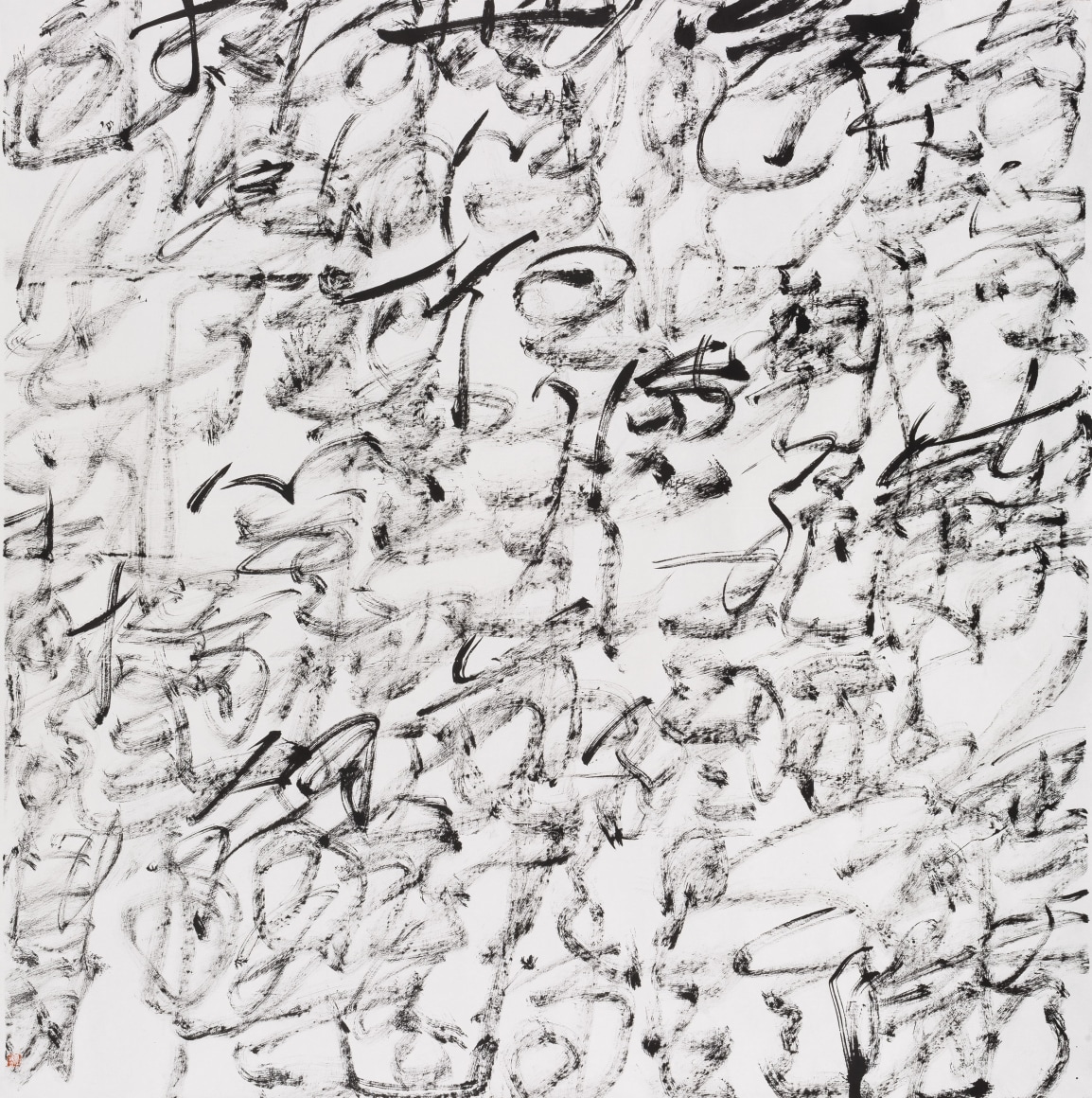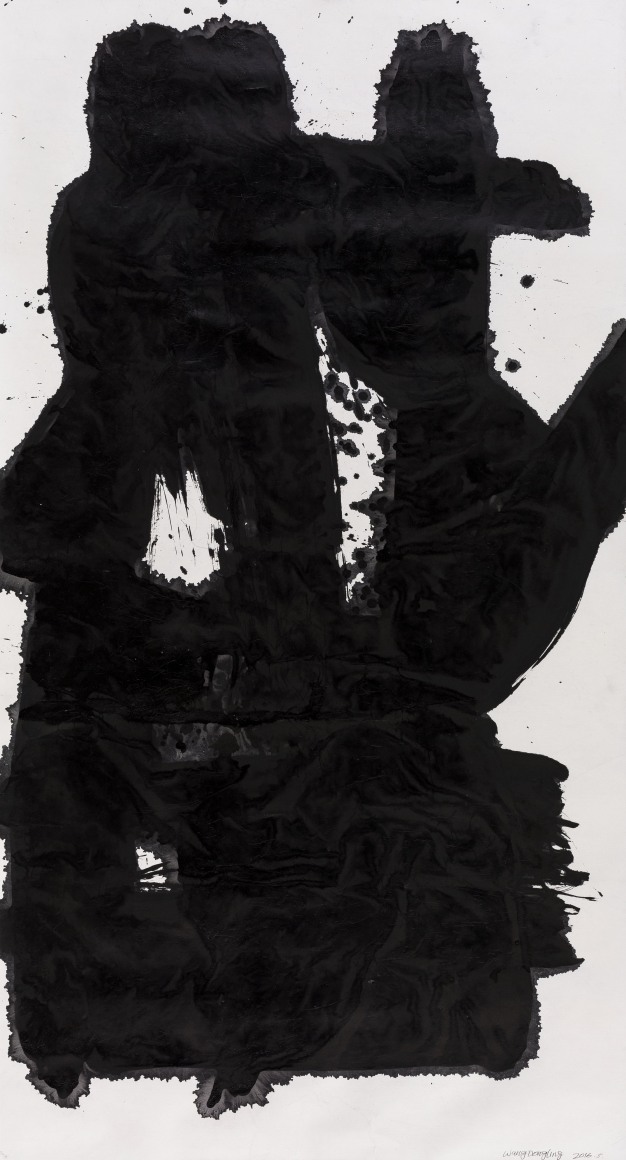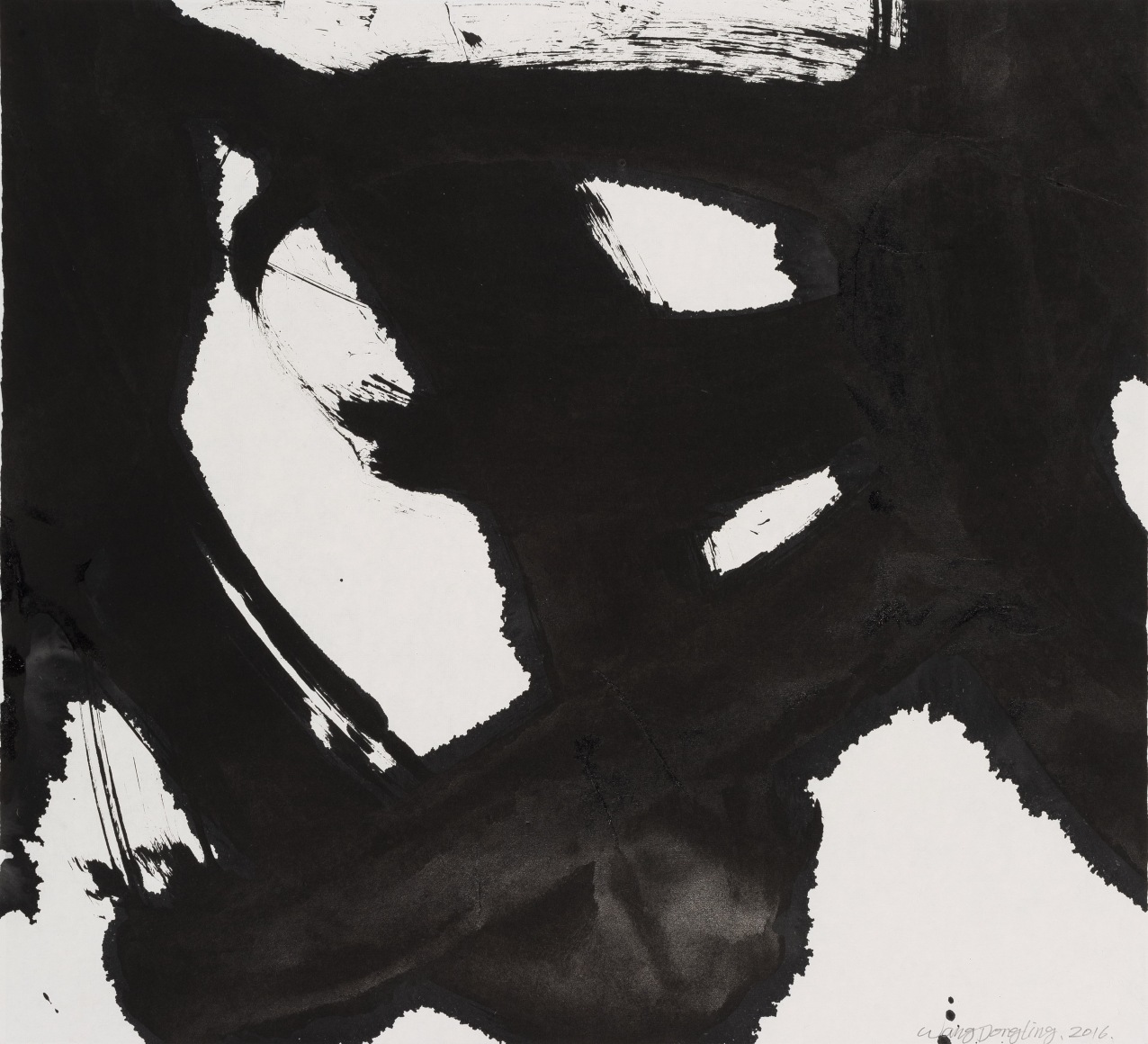Chambers Fine Art is pleased to announce the opening on February 25, 2018 of Wang Dongling: Poetry and Painting. Wang Dongling (b. 1945 in Rudong, Jiangsu Province) is currently Director of the Modern Calligraphy Study Center at the National Academy of Fine Arts, Hangzhou, Zhejiang Province, China and is one of China’s foremost living calligraphers. “Zhejiang,” Wang has commented ,”is a wonderful land where profound inheritance of traditional culture and the long history of Confucianism and Taoism have made it the most fertile soil for the art of calligraphy.”
Calligraphy is one of the oldest living art traditions in the world and Wang has been intimately associated with it since early in his career, studying with the master Lin Sanzhi (1898-1989). It was from the classical training he received under Lin that he acquired the confidence to experiment with ways in which the calligraphic stroke might be liberated from the simultaneous conveyance of meaning.
This tendency became even more pronounced during the three years he spent as a visiting professor at the University of Minnesota and the University of California, Santa Cruz between 1989 and 1991 when he was first exposed to contemporary Western painting. Although never directly influenced by Western abstraction, Wang was certainly affected by the scale of much of what he saw and the willingness by American and European artists of the 1950s and 1960s to take risks, never more pronounced than in the break-through works of the Abstract Expressionists.
As an acknowledged master of this ancient means of expression, Wang is capable of working in styles that encapsulate the history of calligraphy ranging over thousands of years, from the traditional transcriptions in cursive script of classical texts to an entirely abstract mode. Thus his practice embraces the whole gamut of calligraphic expression, ranging from the small scale that characterized works produced in a scholar’s study to the monumental scale of his big character calligraphy. Through his many public performances Wang has greatly expanded the international audience for calligraphy.
In recent years Wang has achieved a new level of freedom of expression in the calligraphic style that is referred to as “luan shu” (chaos script). Although the titles he assigns to his works might derive from poems and texts of the Tang and Song dynasties, any attempt to achieve legibility has been abandoned. Critic Gao Shiming has observed the way in which “detached from all the traditional ways in which calligraphy refers to objects or concepts and graspable images of things, writing becomes pure trace. Thus the corporality and the gesture of writing becomes the essence….The calligrapher is so familiar with his materials that it is almost as if he steps aside and the brush moves by itself. He writes spontaneously, without preconceived ideas, each stroke of the brush leaving a mark, while forms emerge randomly, unpremeditated and unrelated to any forms in the visible world.”
Long interested in the relationship between modern Western art and calligraphy, Wang has expressed admiration for the work of Brice Marden whose own fascination with calligraphy began when he saw the exhibition Masters of Japanese Calligraphy at Asia Society and Japan House Galleries in New York in 1984. After reading as many translations of Chinese poetry into English as he could find, he found himself particularly drawn to the poetry of the eighth century poet Han Shan (Cold Mountain). This confluence of interests led to creation of a major body of paintings, drawings and etchings known collectively as Cold Mountain. A suite of etchings from the Cold Mountain series will provide a valuable opportunity to ponder the relationship between the recent calligraphy of Wang Dongling in which he relinquishes all restraints and Brice Marden’s calligraphic line.
Among many others, Wang’s work is included in the collections of the Metropolitan Museum of Art, New York; the Solomon R. Guggenheim Museum, New York; the British Museum, London; the Palace Museum, Beijing; and the National Art Museum of China, Beijing.
There will be two performances by Wang Dongling during his visit to New York.
Wang Dongling Performance at the ADAA Art Show
Park Avenue Armory
634 Park Avenue, New York, NY
Wednesday, February 28th - 5:30pm
Wang Dongling Performance at Asia Society New York
Asia Society
725 Park Avenue, New York, NY
Friday, March 2nd – 6:30pm

